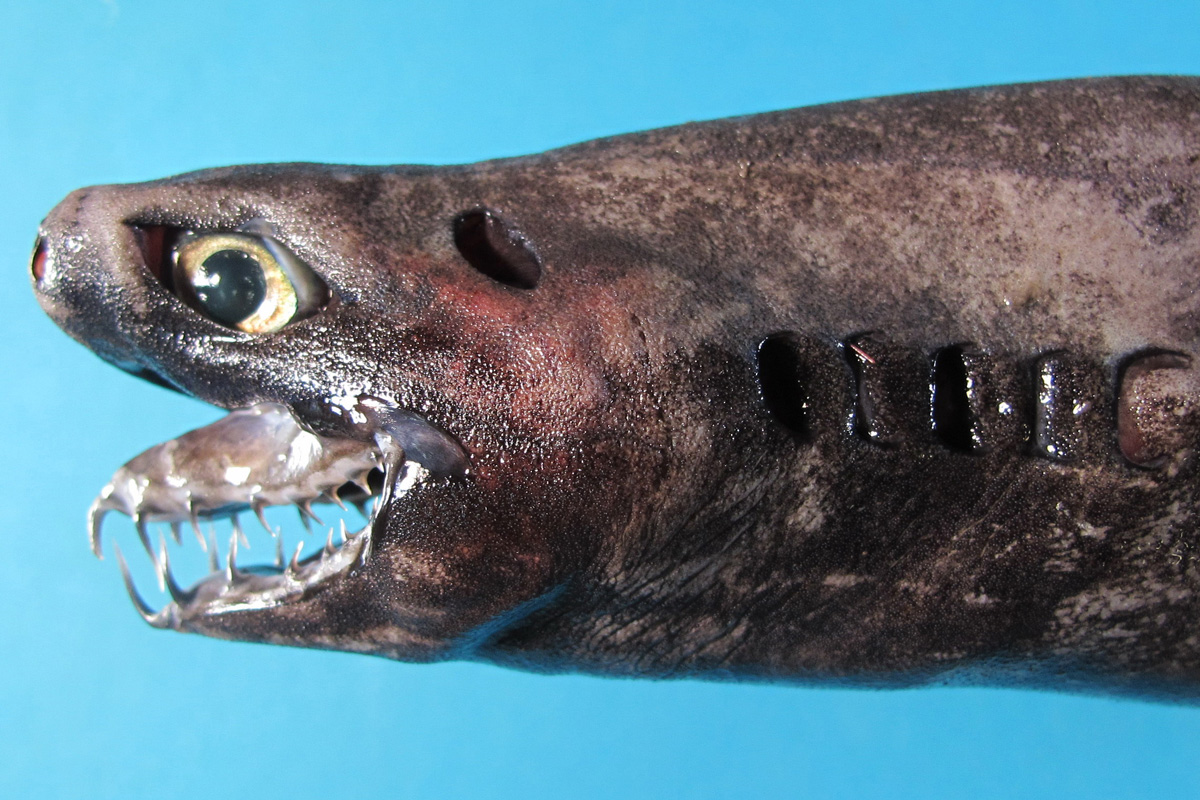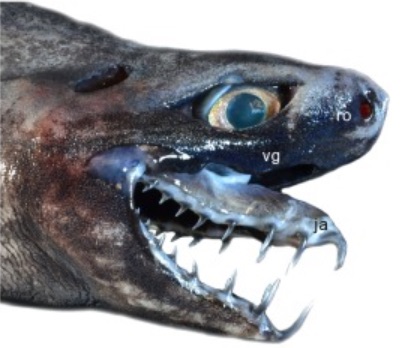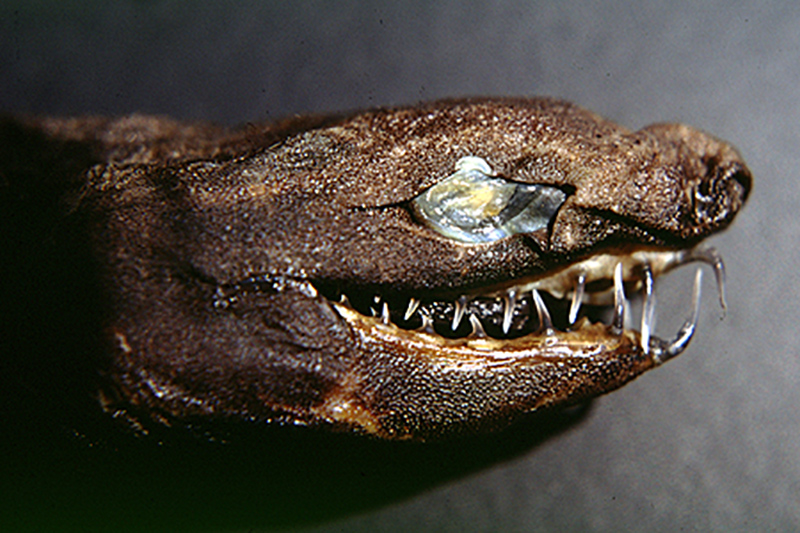'Alien' Shark with Goblin-Like Jaws Hauled Up from the Deep Sea

Imagine this fearsome sight: an ink-black shark with gnarly, needle-like teeth; creepy, glass-like eyes; a glowing belly and a potentially extendable jaw. That's what scientists saw when they pulled up this rare creature, along with four of its pals, from the deep sea — so, naturally, it gave them quite a jolt.
Indeed, they were not expecting to meet these alien-like creatures during a routine fish survey off the Taiwanese coast, according to news reports.
Four of the sharks — known as viper dogfish (Trigonognathus kabeyai) — died immediately, but one survived its capture for 24 hours, until it, too, perished, according to Taiwan News.
Despite the sharks' demise, the discovery is remarkable because viper-dogfish sightings are extremely rare. Such little information is known about them that the International Union for Conservation of Nature (IUCN) can't determine whether they are endangered, and instead lists them in the "data-deficient" category. [See Photos of the Freakiest-Looking Fish]
Scientists didn't discover T. kabeyai until 1986, when researchers fished out two of these sharks in the waters by Japan. But since then, some fishy dossiers have described the elusive shark.

For starters, researchers named the small shark "Trigonognathus" because of the peculiar, triangular shape of its jaws, according to a 1990 study in the Japanese Journal of Ichthyology. Its species name honors Hiromichi Kabeya, the captain of the bottom trawler (a fishing boat that casts out large nets) that found the previously unknown species.
Over the years, researchers have found T. kabeyai off the coasts of Hawaii, Japan and Taiwan. But the tiny shark, which ranges from 7 to 21 inches (17 to 54 centimeters) in size, is considered benthopelagic, meaning it hangs out near the bottom or in the mid-depths of the ocean, where it chows down on bony fish and crustaceans, according to a 2003 study in the journal Ichthyological Research.
Sign up for the Live Science daily newsletter now
Get the world’s most fascinating discoveries delivered straight to your inbox.
Its pointy teeth and glowing underside intrigue scientists. Whereas other sharks have teeth designed to cut and shred, the viper dogfish has canine-like teeth that are slender and widely spaced. In a Jan. 10 tweet, Taiwan News wrote that "even the overseas media and people are amazed by Taiwan's 'strange alien fish.'"
Moreover, the viper dogfish may be able to move its jaws forward while hunting. "Although this has never been observed, these bizarre jaws are likely to be rapidly projected forward to capture elusive prey, as is the case for [its distant relation, the] deep-sea goblin shark (Mitsukurina owstoni), with which it shares some similarities," according to a 2014 study in the journal PLOS ONE.

Light-producing organs, known as photophores, line the underside of the shark's belly and head, according to the 1990 study. But T. kabeyaiis hardly the only glowing shark. It's part of the lanternshark family, whose members are known for their glowing abilities and include the ninja shark (Etmopterus benchleyi) and the large-nosed Etmopterus lailae.
The rest of T. kabeyai's skin is covered with dermal denticles — tough, V-shaped scales that help sharks swim faster by decreasing the drag against the water, according to the 1990 study. But the shark likely manages to avoid fishing nets not because of this superhero-like skin, but because of its small and slender shape, Brittany Finucci, a fisheries biologist in Wellington, New Zealand, told Earth Touch News.
Original article on Live Science.

Laura is the archaeology and Life's Little Mysteries editor at Live Science. She also reports on general science, including paleontology. Her work has appeared in The New York Times, Scholastic, Popular Science and Spectrum, a site on autism research. She has won multiple awards from the Society of Professional Journalists and the Washington Newspaper Publishers Association for her reporting at a weekly newspaper near Seattle. Laura holds a bachelor's degree in English literature and psychology from Washington University in St. Louis and a master's degree in science writing from NYU.









